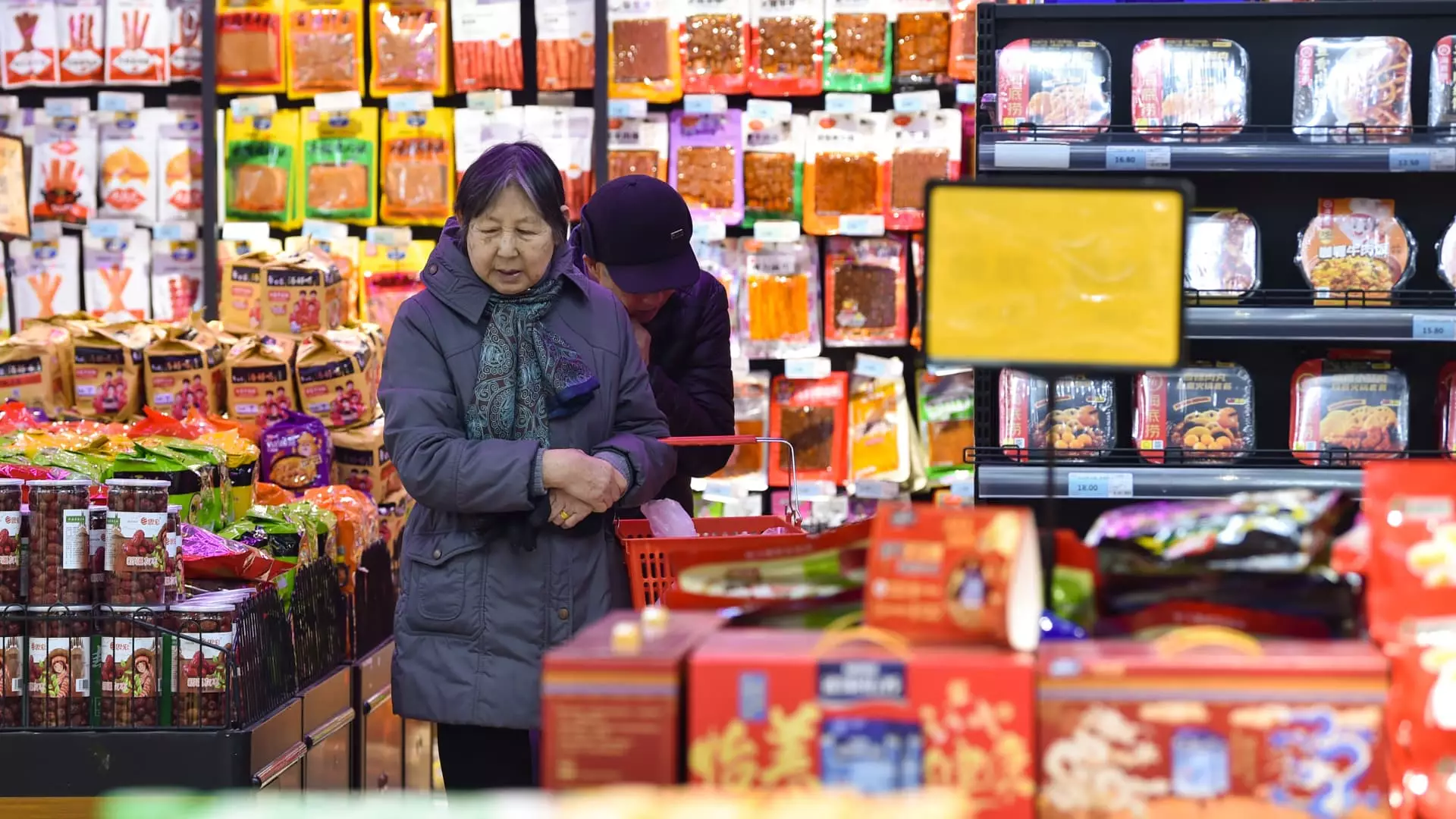In January, China experienced a significant uptick in consumer inflation, marking the most rapid increase in five months. As reported by the National Bureau of Statistics, the Consumer Price Index (CPI) surged 0.5% year-on-year, a stark contrast to the preceding month’s meager rise of just 0.1%. This acceleration outstripped analyst predictions, which had anticipated a 0.4% increase. At the same time, inflation for essential goods like food and fuel—when stripped away—revealed core inflation climbing to 0.6%. These figures showcase complex dynamics at play in the Chinese economy, compounded by persistent producer price deflation.
Despite the rise in consumer prices, the overall consumer spending landscape presents a mixed picture. While reports indicate an increase in spending during the Lunar New Year—a significant cultural event marked by gatherings and celebrations—this enthusiasm for economic participation does not translate into robust growth. Per capita spending recorded a mere 1.2% increase during the holiday period, a stark decline from the significant 9.4% rise reported in 2024. Traditional industries linked to tourism, entertainment, and retail experienced boosts, as evidenced by rising costs related to transport and ticket prices; however, these figures mask deeper concerns surrounding employment and job security. The fluctuation in consumer confidence raises questions about the sustainability of such spending patterns moving forward.
While consumer inflation saw a modest rise, producer prices continued their decline, illustrating a troubling imbalance within China’s economy. The Producer Price Index (PPI) fell 2.3% in January, mirroring December’s decline and exceeding forecasts of a 2.1% decrease. For a staggering 28 consecutive months, factory-gate prices have lingered in deflationary territory, raising concerns of prolonged overcapacity within industrial sectors. Experts, including Xu Tianchen from the Economist Intelligence Unit, emphasize that returning to positive territory in producer prices will be a protracted process, indicating ongoing challenges amidst an unstable industrial landscape.
The Shadow of Tariffs on Economic Growth
In the background looms the impact of U.S. tariffs on Chinese exports, further complicating the economic outlook. The expectation that Beijing will maintain its economic growth target of around 5% for the current fiscal year stands precarious. The persistent pressure from international trade disputes, particularly under the presidency of Donald Trump, has heightened the urgency for Chinese policymakers to stimulate domestic demand effectively. The conclusion is clear; without robust internal demand, the risks of prolonged deflation and a stagnating economy will persist.
Government Policy and Future Outlook
Analysts like Zhiwei Zhang, from Pinpoint Asset Management, suggest that national economic policies may remain inert until after the upcoming annual parliament session. This leaves little room for immediate adjustments to monetary or fiscal strategies, potentially stymying responsive measures to internal economic challenges. As provinces announce their growth targets—averaging below 3%—the implications of such cautious projections indicate a broader recognition of economic vulnerabilities. Moreover, the government’s reluctance to shift policy amidst external uncertainties only compounds these challenges.
China’s economic landscape is at a crossroads characterized by conflicting indicators: rising consumer prices painted against a backdrop of stagnating producer prices. The upcoming months will be pivotal as the nation seeks to reconcile these trends while fostering an environment conducive to sustainable growth. Policymakers face the daunting task of rekindling consumer confidence and enhancing domestic demand in the face of tariff-induced pressures. The interplay between consumer behavior, deflationary trends, and external trade conditions will significantly shape China’s economic trajectory in the near future.


Leave a Reply